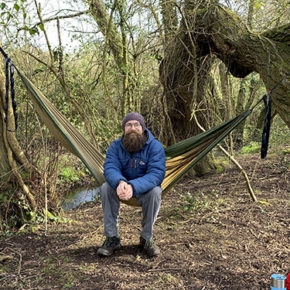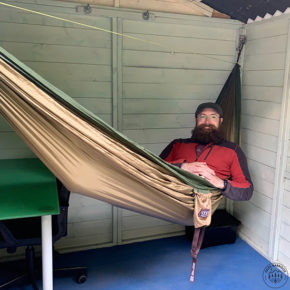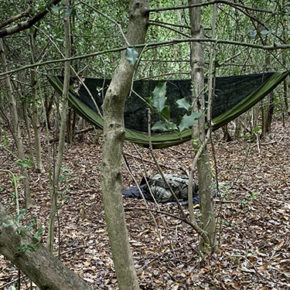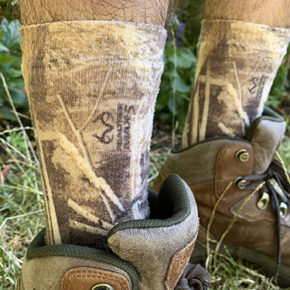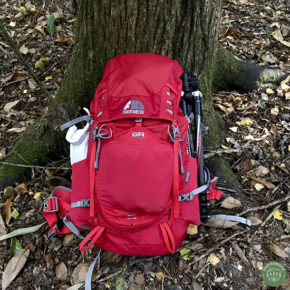Test/Review: Force Ten Vulcan -12 Sleeping Bag
It’s been a while since I took a look at a new sleeping bag. I’ve used various models from various brands over the years – both synthetic and down-filled – and it’s always interesting to see how they use technology to continually raise the bar.
My use of them covers all seasons and varying scenarios – from snowy wild camping at the height of winter, to hammock camping in dense forest during the mild temperatures of spring.
The Vango Force Ten Vulcan -12 has been no exception, and I’ve used it both in typical fashion on a sleeping mat in a tent and opened up as a top quilt when camping in my hammock.
First things first, the specifics
Weighing 1.25kg, this is a 4-season bag with a temperature range of -5˚C (comfort) to -32˚C (extreme). Suggested usage is -12˚C to 15˚C.
With overall dimensions of 220cm (length) x 80cm (chest) x 50cm (foot) – the suggested maximum user height is 200cm (6.5ft approx.) – I was left with a little extra room for my sub-6ft, modest build.
Everyone is different in the way they feel and handle the cold, of course. For me, I’m generally quite a warm sleeper, even at lower temperatures. I’ll typically layer up if needs be and, in the extreme, wear a down smock at night. But if any part of me is going to get cold overnight, it’s my feet.
Thankfully, the Vulcan’s foot box did a fine job and my usual wool socks were the only warmth I typically needed to see me through.
Here comes the science bit
Inside the water-resistant 20D Polar Enduro Ripstop Nylon outer shell, you’ll find Hydro-Barrier 90/10 700FP ethically-sourced duck down. This is held in place by the V-Baffle construction which, along with its Thermal-Reverb aluminised reflective interlining, ensures thermally-efficient performance.
In layman’s terms? The down stays drier four times longer – and dries in half the time – compared to an untreated equivalent and keeps you nice and toasty in the best possible way.
As for the loft that it offers… Wow – it’s fantastic! Naturally, you’d expect a 4-season bag to be ‘puffy’… but I was completely taken aback by just how much the Vulcan offered as soon as I took it out of its supplied mesh storage sack.
So with this in mind, you might be asking how well it compresses down for storage in a backpack. Actually…. really well!
Now granted, the supplied water-tight roll-top dry bag isn’t ideal. It doesn’t have compression straps, so packed size is a considerable 42cm x 21cm approx. In practice, I used a compression sack from another Vango bag, giving me a more workable size of around 1/3 this.
It’s worth noting that, even after being stored all day, the sleeping bag recovered its full, strikingly-red lofty size in no time at all – so I’m confident to say I felt no degree of insulation was lost in the process.
The bag’s lining is Polar Active material which, in practice, is super-soft and, thankfully, doesn’t make the sort of rustling sound that can so often spoil the silence of a night. Let’s face it – nobody wants to sleep in a crisp packet!
The little details
Let’s look at a few more of the other details that the Vulcan -12 offers…
As I have said many times, across a range of kit, one of the things I really like about Vango is their attention to detail and the fact that you get a real sense of the quality and care in their products.
I found the stitching to be faultless once again, especially in areas which you’d expect to get the most abuse. For example, the tab which covers the full length 2-way zip once it’s pulled right up is well finished and the addition of a reflective webbing tab is a nice touch.
Likewise, the pull tab on the zip itself is not insubstantial, making it easy to grab hold of with cold hands or when wearing gloves.
The baffle which runs down the length of the zip (see 2nd picture, above) did a great job of keeping out any draughts. On one occasion, I fell asleep on a cold night having left about 1ft of the bag unzipped. I awoke at about 3am, noticed my mistake through bleary eyes and promptly secured it. Within moments, I felt a surge of warmth back into that chilly area!
Up top, the hood area is relatively snug and creates a good, close fit around the head and shoulders. Not a problem for me – but if you are someone who likes lots of wiggle room, you might want to do a bit of research.
A couple of subtle draw cords can be found on the inside around the shoulder area. In the event, I never felt the need to utilise them, but good to know they are there.
There’s even a small zipped pocket measuring 14cm x 14cm approx. on the inside which, as a photographer, is ideal for keeping batteries (and phones) warm so they retain their power. If you didn’t know, the cold can sap the life out of your batteries overnight if you’re not careful!
Down the far end, you’ll find a couple of loops on the exterior of the foot box – ideal for hanging when storing or drying. In the picture above, the sleeping bag has been flipped for the purpose of illustration – the loops usually rest on the ground.
In conclusion, then…
I’m sure I’m not the only person who gets just a little bit giddy at the thought of getting into his sleeping bag at the end of a long, busy, productive day on location. And I have to admit that the Vulcan -12 prompted more than a few smiles on a number of trips!
It’s an altogether lovely bag – one which I’d be happy to recommend to those of you wishing to camp out at cooler times of the year. If you like the sound of it, but need something a little more- or less warm, there’s also a -17 and -7 version available. Details can be found here.
—
For behind-the-scenes pictures of this sleeping bag in action, take a look at my Instagram feed.
Category: Camping, Location photography, Microadventure, Test/Review










